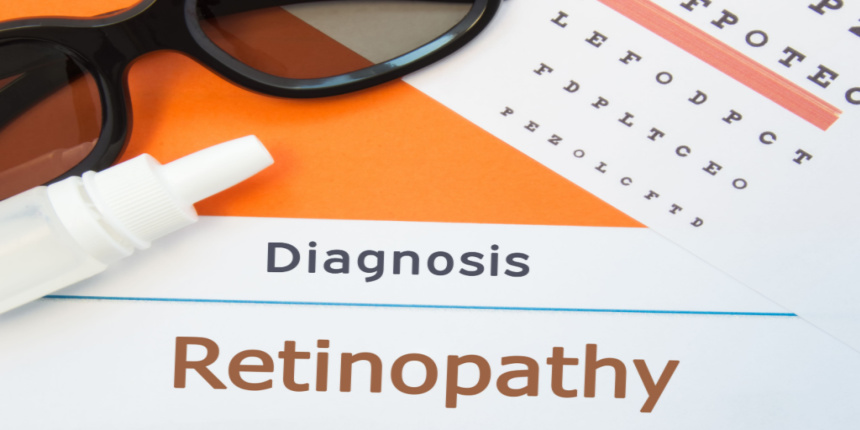ROP Full Form
What is the full form of ROP?
ROP stands for Retinopathy of Prematurity which is an eye disease that might occur in babies born prematurely. Babies born before full term are known as premature babies. There are many complications of early birth, one of the main complications is retinopathy of prematurity. According to WHO, 15 million children are born prematurely each year. It is difficult to observe the signs and symptoms of this disease, it can be easily diagnosed by fundoscopy in which the first eye is dilated by putting some eye drops. To know more about retinopathy of prematurity, and its signs and symptoms continue reading this article.
- What is the full form of ROP?
- What is ROP?
- Stages of ROP
- Causes and Risk Factors of ROP
- Pathophysiology of Retinopathy of Prematurity
- Sign and Symptoms of Retinopathy of Prematurity
- Treatment of ROP

What is ROP?
The expanded form of ROP is retinopathy of prematurity. It is an eye disorder in premature babies. It usually occurs when an abnormal blood vessel grows in the retina. These blood vessels leak or bleed in the eye and can cause scarring of the retina. This may impair the visual image of a newborn baby.
Stages of ROP
Retinopathy of prematurity is divided into five stages depending on the severity of the condition:
Stage1: A white line, known as the demarcation line, is visible between the periphera retina and normally vascularized ratina, where there are no blood vessels.
Stage 2: here the demarcation line between the normally vascularized retina and peripheral retina develops into a ridge.
Stage 3: in this stage blood vessels are visible in the ridge. They start growing and multiplying.
Stage 4: in this subtotal retinal detachment occurs. Vitreoretinal surgery may be needed.
Stage 5: here total retinal detachment occurs. And for this case no treatment is possible.
Causes and Risk Factors of ROP
There are many causes for retinopathy of prematurity. Some of the important causes are explained below:
Poor nutrition in mother and baby
Chronic lung disease can also cause retinopathy of prematurity
If there is too high an oxygen level during neonatal treatment.
Low birth weight of baby is also one of the important risk factors for retinopathy of prematurity
Various types of infection can also lead to prematurity of retinopathy
Cardiac defect
Anemia
Low vitamin E level
Pathophysiology of Retinopathy of Prematurity
Just before the delivery, normal blood vessels grow from the central part of the retina outward. But in premature babies, this process does not occur. In these babies, an abnormal vessel grows and may bleed inside the eye and may cause retinal detachment. Normally the central portion of the eye is vascularised and the lateral portion is less vascularized. The process of development of blood vessels occurs in low oxygen conditions. But in high oxygen conditions blood vessel formation stops. And later on, an abnormal blood vessel may develop which may destroy the eye. These patients with retinopathy of prematurity have a high risk of glaucoma and cataract.
Sign and Symptoms of Retinopathy of Prematurity
It is very difficult to diagnose signs and symptoms of retinopathy of prematurity. Only an eye specialist or a pediatric ophthalmologist can identify the signs and symptoms of this disease. Some signs and symptoms that may be visible in severe cases are explained below:
There may be white pupils which are also known as leukocoria.
Nystagmus may be seen in these patients.
Serve myopia may be there.
Treatment of ROP
If retinopathy of prematurity is not severe, then it can be cured on its own. But if it is severe and there is also retinal detachment, then it may be corrected by the following methods:
Cryotherapy: in this method, the bleeding vessel is stopped by bringing it in contact with a cold temperature. As vessels get constricted in cold temperatures it stops bleeding. This is one of the oldest methods of ROP treatment.
Laser therapy: in laser therapy laser beams are used to treat the retinal side. It takes 35-45 minutes to treat the retinal eye. This stops abnormal blood vessel development. This is one of the most common methods to treat retinopathy of prematurity. But one of the side effects is peripheral vision loss.
Injection: one of the methods to treat this condition is to drop some anit-VEGF drugs into child’s eye. These block the new growth of blood vessels.
Vitrectomy: in this vitreous fluid is removed and replaced with normal saline. Afterwards, the scar tissues are removed on the retina.
Frequently Asked Questions (FAQs)
Yes, it is treatable in most cases. But in severe cases, it is difficult to treat it.
Dilating drops are given to the baby, this helps the doctor to see through the dilated eye into the blood vessel.
There are many complications of retinopathy of prematurity. These complications are retinal detachment, scarring of the eye, glaucoma, bleeding inside the eye, and cataract.
There may be some complications of premature babies. But in most cases, they may grow normally if they get proper nutrition and breastfeeding.
Yes, a baby born at 32 weeks can survive.